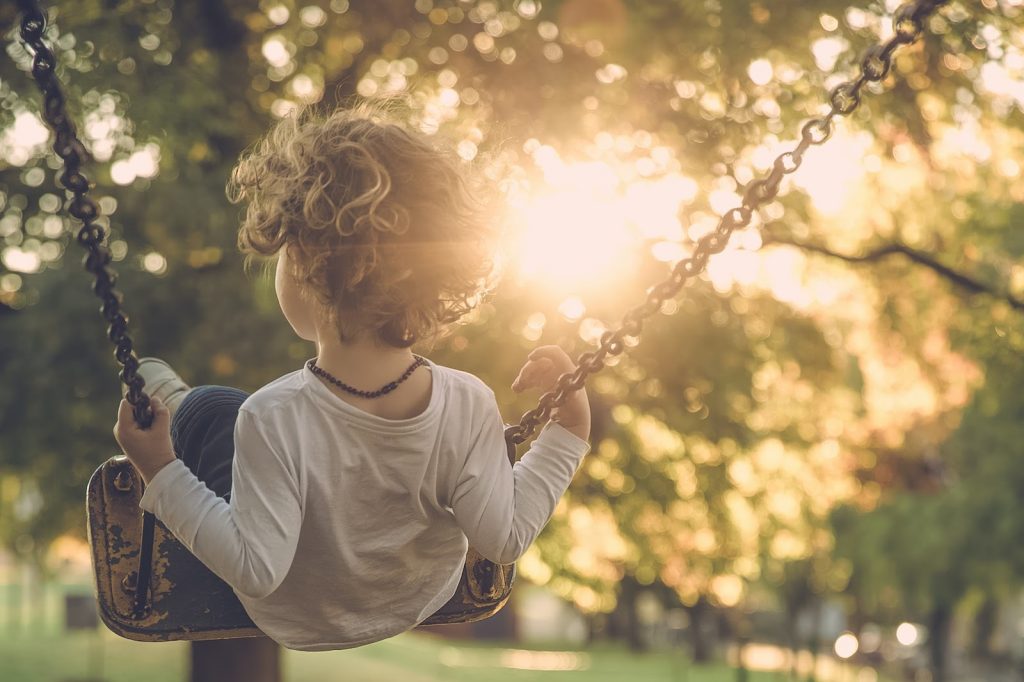
For many kids, a trip to the outdoor playground is their favourite part of the week. For parents, it may be the most stress-inducing. From stranger danger to accidentally being hit by a car, parents are often wracked with worry (even though the rates of all these instances have dropped by 30-70%, meaning kids today are the safest they’ve ever been), and that anxiety carries over to the playground. What parent hasn’t worried over whether their child will fall off the climbing wall, or felt their heart freeze when their toddler faceplants on the way to the slide?
As kids grow older and begin to look for new ways to explore and play, that worry usually manifests by seeking out safe, no-sharp-surfaces playgrounds. However, this obsession with making sure that kids never – ever – experience fear or injury is >actually detrimental to their development. Kids need an element of risk to their playgrounds as they figure out what they’re brave enough to tackle and swell in confidence when they accomplish their goal. Adventure playgrounds may not be right for every neighbourhood, but there are valuable lessons we can learn from them and implement in our playgrounds across the country.
What are Adventure Playgrounds?
Adventure playgrounds are playgrounds that are essentially unstructured. They can take many different forms (construction-themed, nature-themed, etc), but the idea is that instead of traditional outdoor playground equipment, kids play with what they find and create. There are usually a few park attendants nearby, in case of emergency, but the idea of an adventure playground is to allow children to shape their own unique play space.
Unfortunately, adventure playgrounds also usually require a pretty robust insurance agreement, since children will be playing in an area with sharp items and decidedly non-regulation structures. If an adventure playground does make it to opening day, the rewards are well worth the effort. Instead of simply amusing themselves on pre-made structures, children get to work together to construct forts and fortresses, run reconnaissance missions to find the items they need, and get to see through a vision to its completion.
What Kinds of Outdoor Playground Equipment Do They Feature?
Instead of the more traditional slides or swingsets, an adventure playground may be composed of nothing more than some old tables, sheets of wood, rope, and tools like hammers, saws, and nails. In fact, some of these adventure playgrounds have been affectionately referred to as “junkyards” due to the variation of the items they contain.
Why is Risk Important for Kids?
Risk is the element by which children discover what they can and can’t do, and what is safe and what isn’t. Adventure playgrounds do have attendants, but by and large, they’re rarely required to intervene. As children recognize that they’re in an environment that may be “unsafe” compared to what they’re used to, they become more attentive to the risks that are presented and make decisions accordingly.
Kids need the freedom to experiment and push their limits in order to grow and develop. That’s why many children take unnecessary or excessive risks in more traditional playgrounds; they recognize that it’s a safe environment, but what’s the fun of going down a slide if you already know you can? An element of risk is what makes children really shine, because that’s when they can showcase their knowledge and their skills.
Bringing the Best of Adventure to Your Playground
As mentioned earlier in this post, an adventure playground might not be ideal for the playground you have in mind. However, the lessons of the adventure playground are still applicable, and you can implement these ideas in your own outdoor playground for a genuinely memorable experience.
- Look for ways to introduce elements of risk. For example, instead of low-to-the-ground monkey bars, what about monkey bars as a means of getting from one upper platform to another? You can still ensure safety with a net, but suddenly, the ground is much farther away than children are used to, and instead of simply getting from point A to point B, they need to figure out the method they want to use to get there. For younger children, stepping stones are a good alternative.
- Kids love building, and while many playgrounds feature sand pits to dig in, you can take it one step further. Suppose you provide large plastic building blocks that can be stacked together to form forts or houses: parents won’t have to worry about the risks of nails or splinters, but children can still create a space to call their own.
- Get unconventional with your usual playground equipment. Instead of only providing swingsets, what about a rope swing from one hill to another? What about a zipline to take kids from one place to another? You can still provide a safe environment through the turf you choose.
Finding or Making the Equipment You Need
Once you’ve got your creativity flowing, you may find that the kind of plastic equipment you want for your outdoor playground doesn’t exist yet. That’s all right; SPI Plastics provides pre-made playground equipment, but we also possess the ability to complete custom molding projects. Our design team will work with you to create a 3D model, which can then be turned into a prototype. Once it’s approved, your design can go into production, and afterward, you’ll be able to create a play space where kids can imagine, work together, and reach their full potential.
For more information on outdoor playground equipment, including our custom rotational molding service, give us a call at (519) 935-2211. You can also send us a message online.